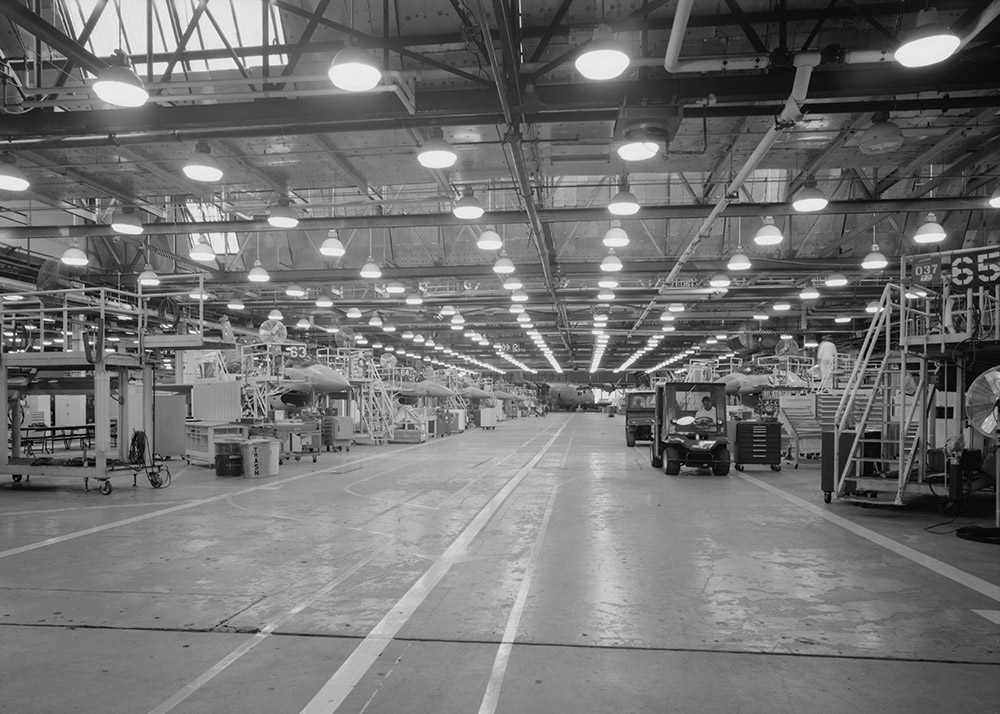Cloud Constructor

[Image: An airplane hangar in Utah, via the U.S. Library of Congress].
Another book I read while jet-lagged in London last week was Skyfaring: A Journey with a Pilot by Mark Vanhoenacker; its chapter “Wayfinding” is particularly fascinating and worth seeking out.

[Image: Interior view of same hangar, via U.S. Library of Congress].
The previous post here, however, mentioned 19th-century cloud chambers, and I was accordingly struck by a quick line in Vanhoenacker’s book. At one point, he describes the construction of airplane bodies inside sprawling factory buildings, contained volumes of air so enormous they could generate their own weather. They were internal skies.
“Some airplane factories are so large,” he writes, “that clouds once formed inside them, a foreshadowing of the sky to come for each newborn jet.”

[Image: Utah airplane hangar, via U.S. Library of Congress].
Of course, other megastructures are also known to produce internal precipitation. NASA’s Vehicle Assembly Building at Cape Canaveral “is the second largest building (by volume) in the world,” for example, “and it even has its own weather inside—NASA employees report that rain clouds form below the ceiling on very humid days.”
And, as architecture writers like David Gissen and Sean Lally have compellingly shown, architecture—in and of itself—has, in a sense, always been a kind of applied atmospheric design, with buildings defined as much by temperature, barometry, and humidity as they are by walls and ceilings.
But I nevertheless love the idea of aircraft assembly and repair occurring amidst inadvertent simulations of the sky to come, as dew points are crossed, condensation begins, and internal weather fronts blurrily amass above the wings of dormant airplanes, as if conjured there in a dream.





Comments are moderated.
If it's not spam, it will appear here shortly!
Post a Comment